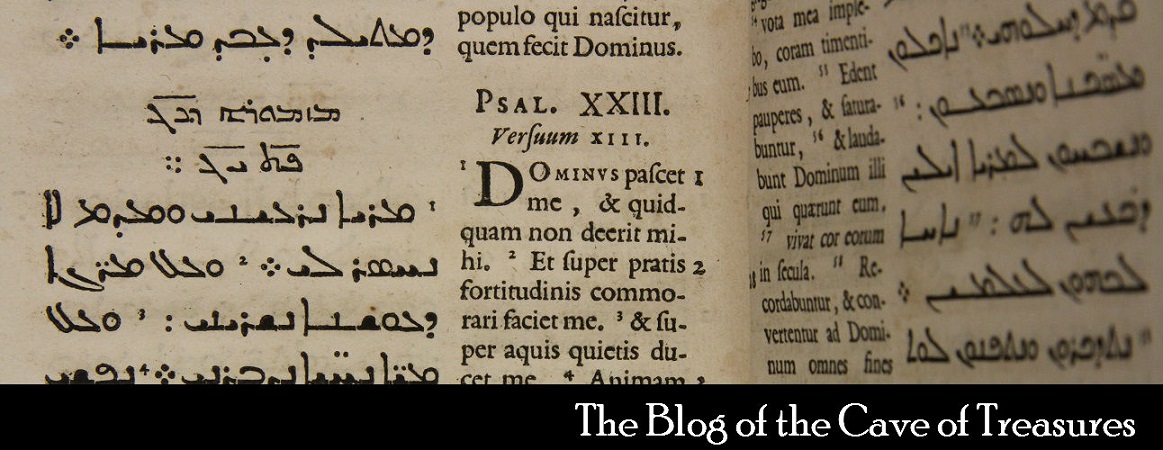 |
| Dormition of the Theotokos Monastery (Kaftoun, ܠܒܢܢ) |
Fr. Elia's discusses in this newsletter the use of language in the Trilingual Icon of Kaftun (from the ancient Monastery of the Dormition of the Theotokos in Kaftoun, Lebanon) portraying the Theophany and adorned with Greek, Syriac, and Arabic...
 |
| Trilingual icon of the Theophany |
This use of all three languages on the icon suggests to us the strong possibility that the residents and monks of Kaftun were familiar with each of these languages enough to understand such an icon.
When one considers just how difficult each one of these languages is, to imagine that all three of them were used at the same time and in the same place is truly remarkable, and witnesses to the great heritage of the Antiochian Church and the work still required to uncover that heritage.
It is important for us to remember that we are part of the Living Tradition, and that our witness is for the person Christ Jesus, rather than a specific text. While we must always try to repeat the letter of the text, we must also remember what Jesus Christ and the Apostle Paul have said, that the letter kills, while the Spirit gives life (John 6:63 and 2 Cor. 3:6). When Christ asked the lawyer, ‘How do you read?’ (Luke 10:26), He showed us that the Law is written in hearts and minds, as much as in words and books.
Icon Detail: Prophet Isaiah w/ scroll. Passages from Isaiah in Syriac
...as the painter of the icon did not quote the Bible word for word, but creatively and artistically combined different Bible verses to communicate Jesus Christ to those looking on the icon in prayer. We must similarly familiarize ourselves with the Bible and works of the Fathers in order to both remain faithful to the Holy Tradition, and reproduce that Tradition in each unique circumstance that presents itself to us in our own lives.
I recommend downloading the newsletter. He includes beautiful photos and news of his fascinating work. www.antiochcentre.net/newsletter.php
Fr. Elia cross-references some of his material in the 2006 article in Parole de l’Orient, in which he includes the following footnote:
I would like also to bring to attention to the recent and extremely important discovery of the ancient and wonderful frescoes in the Church of Saints Sergius and Bacchus near the Monastery of the Theotokos in Kaftun. A project was set up to reveal and preserve these frescoes hidden under plaster. These frescoes contain a number of inscriptions in Greek, Syriac Chalcedonian, and Arabic. (Elia Khalifeh, “A project on the Antiochian Chalcedonian Orthodox manuscripts: Syriac, Arabic, CPA and Greek” Parole de l’Orient 31 (2006) 1-9).
 With some searching I found photos from Church of Saints Sergius and Bacchus (taken by Mat Immerzeel) on Medievalart.org. Indeed, the saints are depicted in Byzantine style while their names are written in Syriac. Yacob (St. James, second from left) is clear, and on the far left appears to be Phillip. If the end of the name being cropped out raises any question, it is interesting the figure is beardless, an traditionally iconographic portrayal of Phillip. Below is St. Mark (ܡܪܟܘܣ ).
With some searching I found photos from Church of Saints Sergius and Bacchus (taken by Mat Immerzeel) on Medievalart.org. Indeed, the saints are depicted in Byzantine style while their names are written in Syriac. Yacob (St. James, second from left) is clear, and on the far left appears to be Phillip. If the end of the name being cropped out raises any question, it is interesting the figure is beardless, an traditionally iconographic portrayal of Phillip. Below is St. Mark (ܡܪܟܘܣ ).

